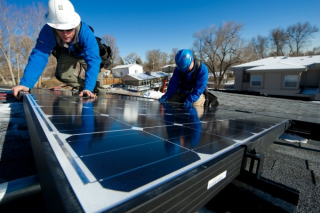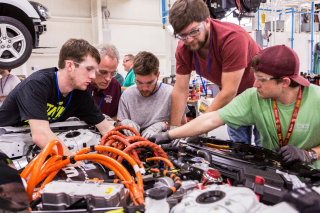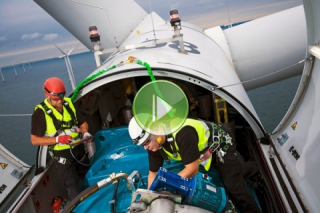Finding a new job can be tough. One way to maximize your odds is to look for opportunities in clean energy. It’s one of the fastest-growing, most innovative sectors of our economy.
A recent U.S. Department of Energy (DOE) report on jobs and the economy found that 6.4 million Americans work in the energy sector, with 300,000 jobs added last year. A huge percentage of these new jobs are in renewable energy and efficiency.
Let’s take a look at just a few of the fastest growing jobs in the sector.
Wind Turbine Technician
Adding 25,000 new jobs last year, the U.S. wind industry now boasts 102,000 workers. Wind turbine technician isn’t just one of the fastest growing jobs in clean energy – it’s the single fastest growing occupation in America. According to the Bureau of Labor Statistics, employment in the sector will grow 108% by 2024.
To learn more about opportunities in wind, check out the DOE Wind Career Map.
Solar Installer
The solar industry added more than 73,000 jobs in 2016 – a 25% increase over 2015. In fact, it’s estimated that one out of every 50 new jobs created nationally came from solar.
This growth has sparked an array of opportunities for many professionals – even in fields such as real estate and sales. The core of the industry and the technology’s growth continues to be solar installers, who help set up and maintain the panels that are increasingly appearing on rooftops.
 Photo | National Renewable Energy Laboratory
Photo | National Renewable Energy Laboratory
To learn more about the requirements for installation professionals and other career pathways within the solar industry, visit the DOE Solar Career Map.
Clean Car Engineer
More alternative fuel vehicles are hitting the streets – and so are opportunities related to sustainable transportation. Today more than 259,000 Americans work with these vehicles, including cars and trucks running on electricity, hydrogen, and other alternative fuels, such as natural gas.
The growing demand for cars that both save money and create less pollution has driven a need for skilled engineers. DOE has set out to help strengthen the next generation of clean car engineers through a range of competitions like EcoCAR 3, which challenges teams of university students to apply their creativity and technical chops for designing energy-efficient, high performance vehicles.

Motors Proving Grounds at Yuma, EcoCAR 3 Competition at General Arizona.
To learn more about careers in energy efficient vehicles, visit DOE’s Education Homepage.
Sustainable Builder
Nearly 1.4 million energy efficiency jobs are in the construction industry. Construction firms have also seen a marked increase in the percentage of their workforce that spends at least half their time on work related to improving energy efficiency, rising from approximately 65% in 2015 to 74% in 2016.
Building more environmentally sustainable buildings and houses requires expertise across a range of professionals in design and construction – from architects and engineers to carpenters and heavy equipment operators.
DOE hosts a variety of competitions to harness the creativity of industry leaders, such as Solar Decathlon, which challenges collegiate teams to design, build and operate solar-powered houses. The program provides unique training and hands-on experience to prepare the competing students to enter the clean energy workforce.
Sustainability Professional
In addition to designing and building new homes and facilities, there are vast job opportunities for making our existing buildings more energy efficient, sustainable, and resilient. Many organizations have adopted sustainability goals and practices as part of their business strategies. A growing network of experts, consultants, and energy managers are responsible for setting and implementing plans to effectively meet these goals and find greater efficiencies in their facilities.
Through our Better Buildings Initiative, DOE has helped establish national guidelines for professional certifications programs. This can improve the quality of workforce credentials for energy auditors, managers, and other efficiency-related occupations.

To learn more about the growing opportunities in clean energy, check out the 2017 U.S. Energy and Employment Report and DOE’s Clean Energy Jobs and Career Planning resources.
Ref: https://www.energy.gov/eere/articles

